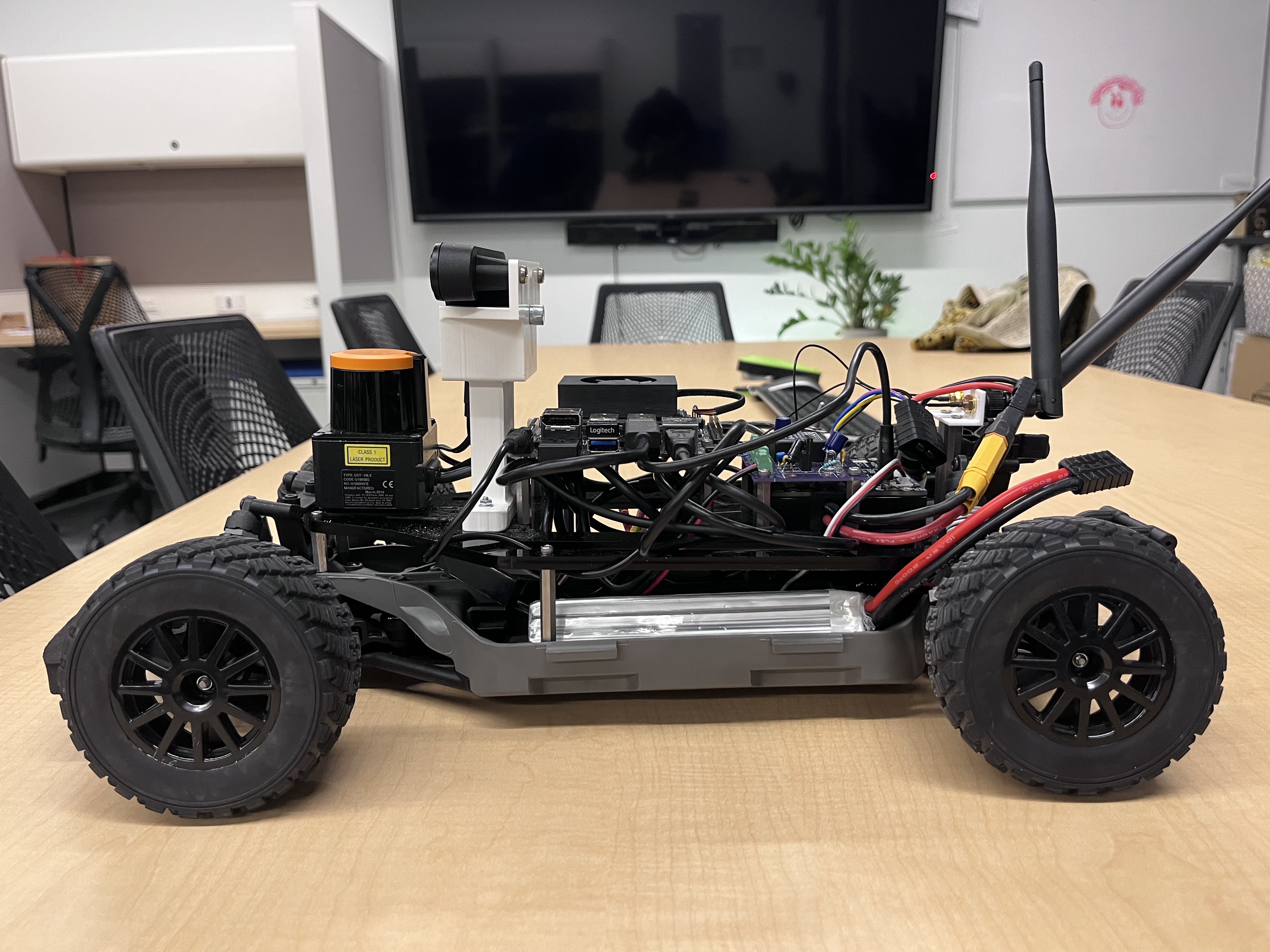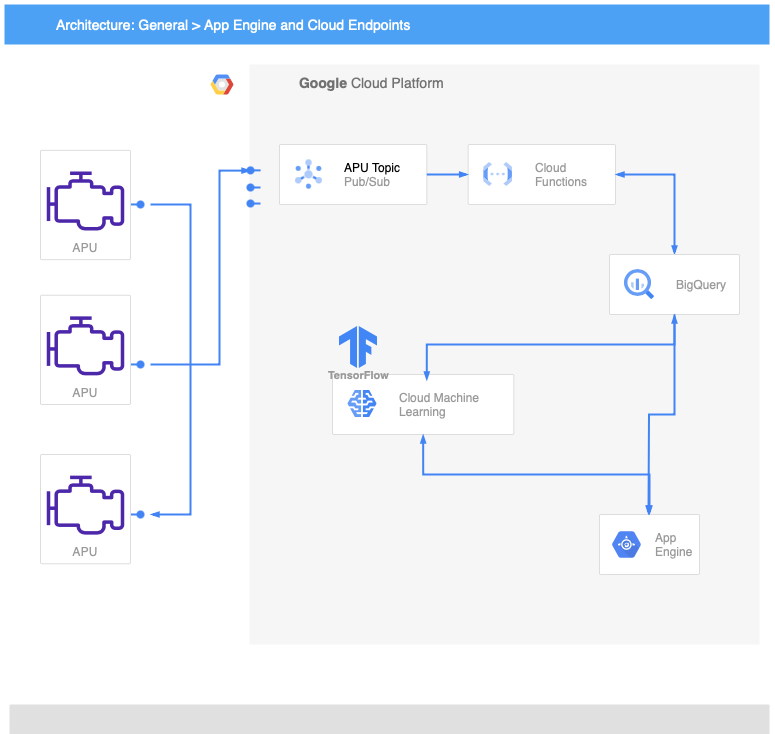Welcome to my Portifolio
Autonomous Vehicle Development F1tenth vehicle

Overview:
built two scaled-down autonomous vehicles as part of my research in autonomous driving technologies. Integrated hardware and software components for navigating complex environments.
Description:
- Full Stack Development: Implemented the complete software stack for autonomous navigation including perception, localization, planning, and vehicle control.
- Perception : Utilized OAK-D camera for object detection and Hokuyo lidar for localization.
- Localization: Implemented particle filters for accurate vehicle localization.
- Path Planning and Control: Developed RRT for path planning and pure pursuit algorithms for vehicle control.
Technologies Used:
- Programming Languages: C, C++, Python
- Hardware: Nvidia Jetson Xavier, OAK-D camera, Hokuyo lidar, VESC motor controller
- Tools and Frameworks: Git, CAD, linux
Key Achievements:
- Built and demonstrated autonomous vehicles in lab settings, enhancing the research capabilities of the lab.
- Developed robust autonomous driving software, contributing significantly to ongoing research efforts.
ProActRail - Predictive Maintenance System for Railway Air Production Units
Overview: Developed the “ProActRail” application, a sophisticated predictive maintenance system using Streamlit, aimed at enhancing the reliability and safety of railway systems by predicting equipment failures. This project focuses on integrating a machine learning model with cloud-based technologies to enable real-time data processing and predictive analytics.

Description:
- Machine Learning and Predictive Analytics: Implemented a Sparse Autoencoder (SAE) model to predict failures using deep learning techniques. This approach improved predictive accuracy and system reliability.
- System Architecture and Integration: Designed and executed a complete IoT solution encompassing data generation, ingestion, storage, model inference, and visualization, utilizing various Google Cloud Platform services such as Pub/Sub, App Engine, BigQuery, and Vertex AI.
- Cloud and Big Data Management: Managed the system’s cloud infrastructure, ensuring efficient data handling, storage, and retrieval, and configured the cloud services to optimize for high-volume data processing and real-time analytics.
- Frontend Development and Data Visualization: Developed a user-friendly frontend application using Streamlit, enabling real-time monitoring and visualization of predictive results, which aids maintenance teams in timely decision-making.
Technologies Used:
- Programming Languages: Python
- Frameworks and Libraries: Streamlit, TensorFlow (SAE models), scikit-learn
- Cloud Technologies: Google Cloud Platform (Pub/Sub, BigQuery, App Engine, Vertex AI)
- Data Management: BigQuery for data storage and SQL for querying
Key Achievements:
- Enhanced predictive maintenance capabilities by integrating machine learning with IoT, resulting in a system that predicts equipment failures with high accuracy and minimal false positives.
- Developed a robust cloud-based architecture capable of real-time data processing and analytics, significantly improving operational efficiency and system reliability.
- Provided a comprehensive solution from data generation to visualization, demonstrating an ability to design and manage complex systems, a valuable asset for Sarcomere Dynamics’ multidisciplinary engineering projects.
Project Link: ProActRail on GitHub
Smart Homes and Machine Learning Integration
Overview: Developed a smart home system utilizing machine learning to enhance energy efficiency and automate home management. This project involved designing, implementing, and integrating a smart home system with a focus on reducing energy consumption through automated control of home appliances based on user behavior and environmental data.
Description:
- Implemented a smart home system using IoT devices with a central home automation hub using OpenHAB, MQTT for communication, and InfluxDB for data storage. Designed the system to operate fully locally without external cloud dependencies to ensure data privacy and security.
- Applied machine learning algorithms to predict and automate the control of home appliances such as air conditioners, enhancing energy efficiency. Utilized TensorFlow for model training and deployment, focusing on supervised learning techniques.
- Configured and managed a local database to store time-series data from various sensors around the home. Performed data preprocessing to ensure quality inputs for machine learning models.
- Integrated various IoT devices including Sonoff switches and sensors with custom firmware to facilitate smart control over home appliances. Established a secure and efficient network setup using MQTT as the communication protocol.
Technologies Used:
- Programming Languages: Python
- Frameworks and Libraries: OpenHAB, TensorFlow, Tasmota (custom firmware)
- Database and Data Handling: InfluxDB for time-series data storage, MQTT for device communication
- Hardware: Raspberry PI, Sonoff smart switches and sensors
Key Achievements:
- Successfully reduced energy consumption by automating the control of electrical devices based on predictive models that analyze user behavior and environmental conditions.
- Enhanced system security and privacy by maintaining all data processing locally without relying on external cloud services.
- Developed a scalable smart home model that can be extended to control other home functions, showcasing potential for future expansion and integration into larger smart city projects.